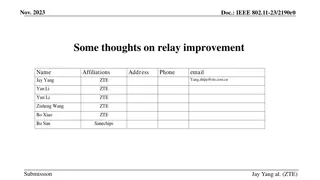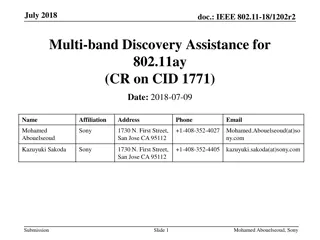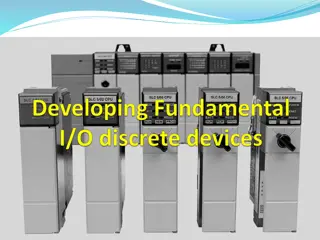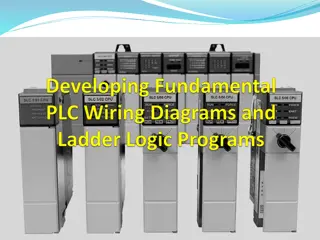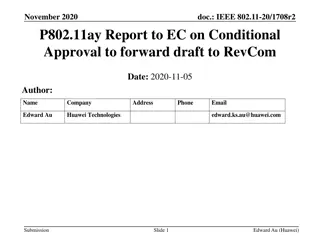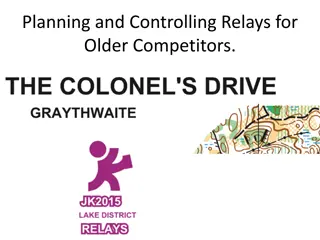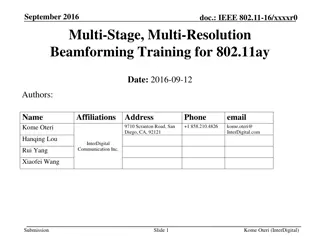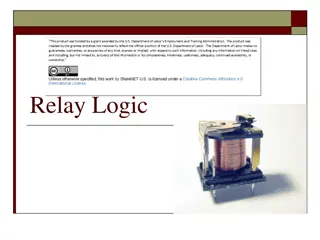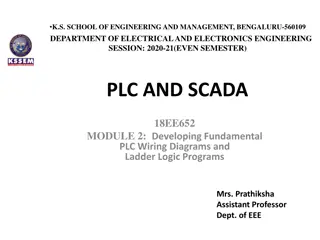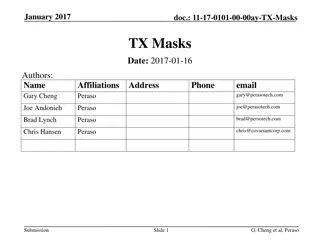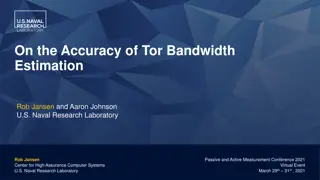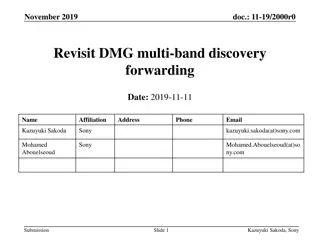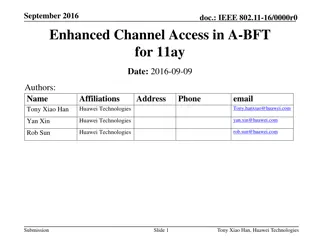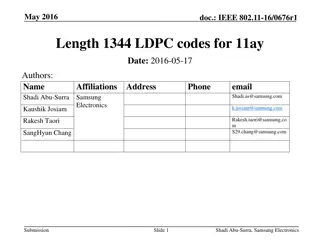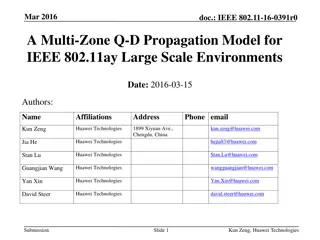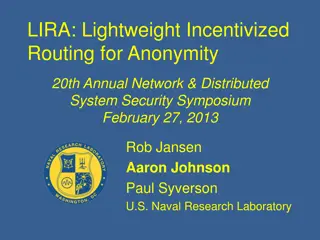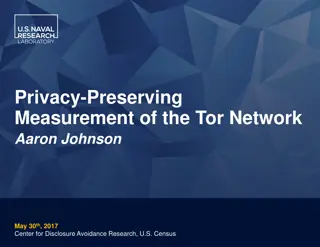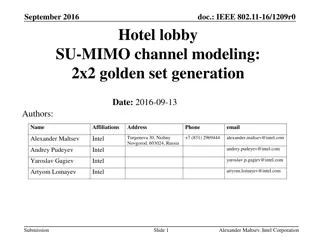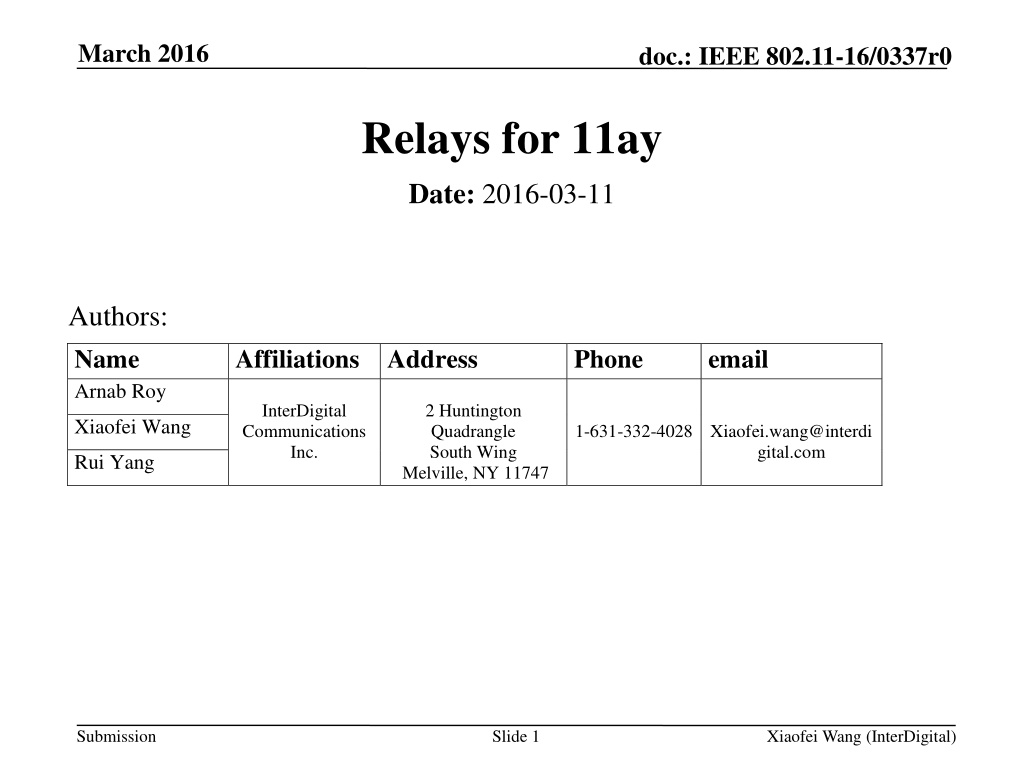
Importance of Relays in mmW Band for IEEE 802.11ay
"Explore the significance of relays in mmW communications, focusing on the role of relays in coverage extension and robust connections for IEEE 802.11ay standards. Discover the essential features and contributions of relays in enhancing network throughput and resilience against link outages."
Download Presentation

Please find below an Image/Link to download the presentation.
The content on the website is provided AS IS for your information and personal use only. It may not be sold, licensed, or shared on other websites without obtaining consent from the author. If you encounter any issues during the download, it is possible that the publisher has removed the file from their server.
You are allowed to download the files provided on this website for personal or commercial use, subject to the condition that they are used lawfully. All files are the property of their respective owners.
The content on the website is provided AS IS for your information and personal use only. It may not be sold, licensed, or shared on other websites without obtaining consent from the author.
E N D
Presentation Transcript
March 2016 doc.: IEEE 802.11-16/0337r0 Relays for 11ay Date: 2016-03-11 Authors: Name Arnab Roy Affiliations Address InterDigital Communications Inc. Phone email 2 Huntington Quadrangle South Wing Melville, NY 11747 Xiaofei Wang 1-631-332-4028 Xiaofei.wang@interdi gital.com Rui Yang Submission Slide 1 Xiaofei Wang (InterDigital)
March 2016 doc.: IEEE 802.11-16/0337r0 Abstract This contribution highlights the importance of relays for 11ay and suggests inclusion of some additional features in the 11ay relaying procedures based on a number of deficiencies identified for the 11ad relaying procedures. Submission Slide 2 Xiaofei Wang (InterDigital)
March 2016 doc.: IEEE 802.11-16/0337r0 Introduction Relays are important for mmW communications, especially for coverage extension and robust connections. Two 11ay usage models assume relay support: Data Center and Wireless Backhauling [1]. While 11ad supports directional relays, it has some deficiencies. 11ah supports relaying with some advanced features, but it is limited to sub-1Ghz band. 11ay should retain support for directional relays, and update the procedures to enable enhanced functionality. Submission Slide 3 Xiaofei Wang (InterDigital)
March 2016 doc.: IEEE 802.11-16/0337r0 Importance of Relays in the mmW Band Relays can potentially increase the range of BSS/PBSS. Relays can provide resilience against link outages due to blockage. Relays can provide alternative connections with lower interference compared to the direct ones. Relays may increase overall network throughput by breaking a long link into shorter links Shorter links may enable higher data rate transmissions Due to spatial containment of mmW transmissions using narrow beams multiple relay transmissions may occur simultaneously. Submission Slide 4 Xiaofei Wang (InterDigital)
March 2016 doc.: IEEE 802.11-16/0337r0 Brief Overview of 11ad Relay Procedures 11ad supports Relay operation types: Link Switching and Link Cooperating. Relay operation modes: Full-Duplex/Amplify and Forward (FD/AF); Half-Duplex/Decode and Forward (HD/DF). Relay is largely seen as a backup when the direct link between the Source and Destination fails. HD/DF relays use alternating First and Second Periods to complete transmissions over two hops. In link switching, FD/AF mode uses Link Change Interval and Data Sensing Time to switch between direct and relay links. 11ad relays have a number of deficiencies Submission Slide 5 Xiaofei Wang (InterDigital)
March 2016 doc.: IEEE 802.11-16/0337r0 Problems with 11ad Relaying (1/4) Lack of support for relay setup between STAs that are outside mutual transmission range. Both Source (S-REDS) and Destination (D-REDS) nodes must be part of the BSS/PBSS, and have a direct link setup between them before initiating relay link setup. LEGEND Coverage of AP/PCP Coverage of STA AP/PCP AP/PCP STA link STA STA direct link STA 1 (S-REDS) STA 3 (D-REDS) STA 2 11ad relay procedure does not support relay setup between STA1 and STA3 as they are outside of mutual transmission range. STA2 relays STA1 STA3 traffic and relieves the load on AP/PCP. Submission Slide 6 Xiaofei Wang (InterDigital)
March 2016 doc.: IEEE 802.11-16/0337r0 Problems with 11ad Relaying (2/4) Lack of coverage extension procedures. Both Source (S-REDS) and Destination (R-DEDS) nodes must be part of the BSS/PBSS before initiating relay link setup. BSS coverage of AP/PCP 11ad relay procedure does not support STA2 joining the BSS using STA1 as relay. STA2 STA1 AP/PCP Submission Slide 7 Xiaofei Wang (InterDigital)
March 2016 doc.: IEEE 802.11-16/0337r0 Problems with 11ad Relaying (3/4) Retransmission inefficiency due to lack of scheduling flexibility of fixed First and Second Periods. Another 1st and 2nd Period pair is needed for re-transmission (S R transmission may be skipped since that was successful in first attempt) R D transmission is not successful S R PSDU 1 R D PSDU 1 S R PSDU 1 R D PSDU 1 NOTE: First and Second Periods include ACK/B-ACK transmissions also (not shown here). First Period Second Period First Period Second Period Submission Slide 8 Xiaofei Wang (InterDigital)
March 2016 doc.: IEEE 802.11-16/0337r0 Problems with 11ad Relaying (4/4) Lack of support for multi-hop relaying. Two 11ay usage models assume multi-hop relays [1]: Usage Model 4: Data Center Usage Model 8: Wireless Backhauling Another usage model could potentially benefit from (multi-hop) relays: Usage Model 7: Mobile Fronthauling Submission Slide 9 Xiaofei Wang (InterDigital)
March 2016 doc.: IEEE 802.11-16/0337r0 Brief Overview of Relaying in 11ah 11ah allows multi-hop relaying. Relays are used to extend coverage and reduce energy consumption (higher rate, lower power and shorter transmission time). Sub-1 GHz (S1G) relay consists of an S1G relay AP, S1G relay STA and a relay function. STAs can connect to an AP or an S1G relay. Supports implicit and explicit ACK The four-addresses scheme is utilized to correctly forward relay frames from source to destination. Submission Slide 10 Xiaofei Wang (InterDigital)
March 2016 doc.: IEEE 802.11-16/0337r0 Relay features worth considering for 11ay Several deficiencies in 11ad relaying procedures have been identified Some of the deficiencies may be addressed by features similar to the relaying capabilities defined in 11ah Given these, 11ay may want to consider the following relay features: Support for establishing relay links between STAs that do not have direct links Support for BSS/PBSS coverage extension using relays Support for multi-hop relays Support for improved efficiency when using relay links Submission Slide 11 Xiaofei Wang (InterDigital)
March 2016 doc.: IEEE 802.11-16/0337r0 Conclusions While 802.11ad relaying procedure adds important capabilities and imparts robustness to directional transmissions, it has some deficiencies. Usage models for 11ay require relaying capabilities and 11ay should consider to enhance 11ad relaying features. Submission Slide 12 Xiaofei Wang (InterDigital)
March 2016 doc.: IEEE 802.11-16/0337r0 Reference [1] IEEE 802.11ay Usage Scenarios: 11-15-625r3, Sept 2015 Submission Slide 13 Xiaofei Wang (InterDigital)
March 2016 doc.: IEEE 802.11-16/0337r0 Straw Poll 1 Do you agree that 11ay shall provide additional relay capabilities and efficient relay procedures relevant to 11ay usage models? Y/N/A: Submission Slide 14 Xiaofei Wang (InterDigital)
March 2016 doc.: IEEE 802.11-16/0337r0 Straw Polls 2 Do you agree that one or more of the following features should be considered by 11ay? 1. 11ay should consider supporting relay links between STAs that are outside communication range of each other. Y/N/A: 2. 11ay should consider BSS/PBSS coverage extension using relays. Y/N/A: 3. 11ay should consider supporting flexible channel utilization on successive relay hops. Y/N/A: 4. 11ay should consider multi-hop relays. Y/N/A: Submission Slide 15 Xiaofei Wang (InterDigital)

